Talents Assistant Blog
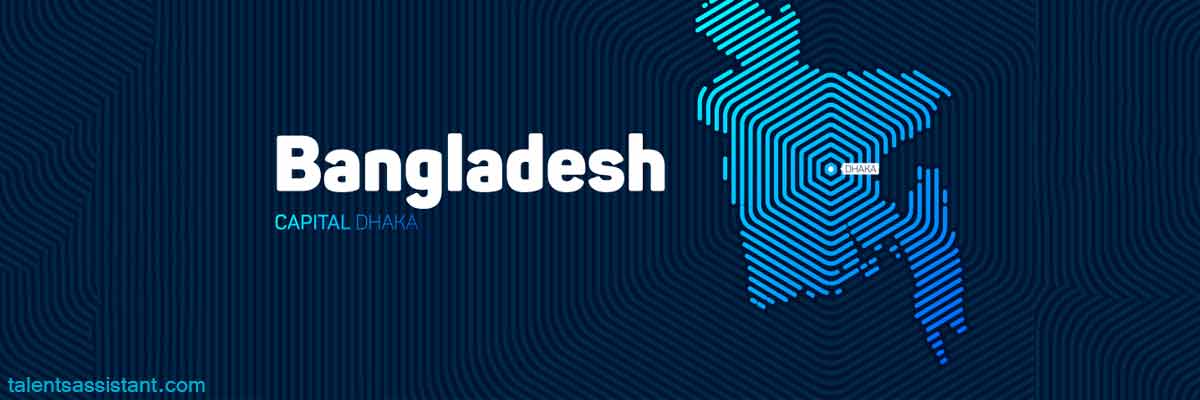
Bangladesh is a developing country in the world. The Journey for Representative government has been an imperative part of the history of Bangladesh. The freedom battle of the eastern Bengali people groups against the British, partition from India in 1947, and severance from Pakistan in 1971 set the organization for the people of Bangladesh to make a democratic political framework.
Bangladesh is a small state in the world but it has a huge population. It was a part of the British Colony. In 1971, Bangladesh achieved independence from Pakistan by the dedication of huge blood. discussed below it.
Even though debilitated by Indian extension and Portuguese pillagers, the arrive remained generally independent until June 1757 when the British sent troops beneath Robert Clive to vanquish a constraint-driven by nearby ruler Nawab Siraj-ud-Dwolla at the Fight of Plassey (known locally as Polashi).
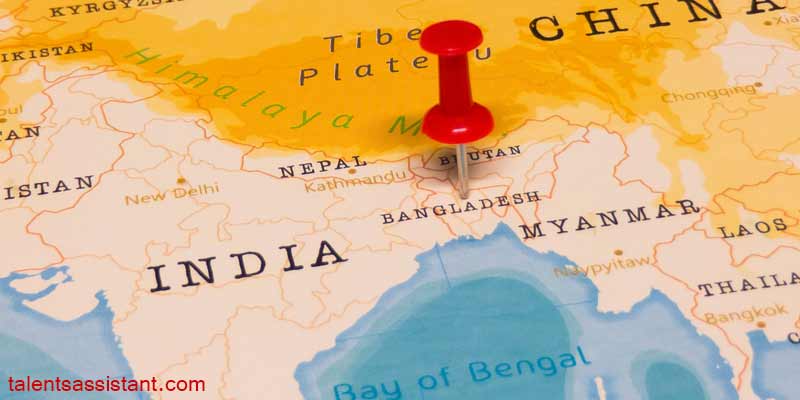
The colonial British were content to take off the zamindars – proprietors of tremendous landed domains – in control. Most of these were upper-caste Hindus, as were the operators who collected cash from the primarily Muslim laborers; these city-dwelling operators got to be the center of an unused center course, the bhadralok.
In 1905 the British partitioned what they called Bengal into two – with Dhaka as the capital of the east and Calcutta of the west. But they met with such furious resistance – driven by, among others, the incredible Bangla writer Rabindranath Tagore – that they had to rejoin the area in 1912.
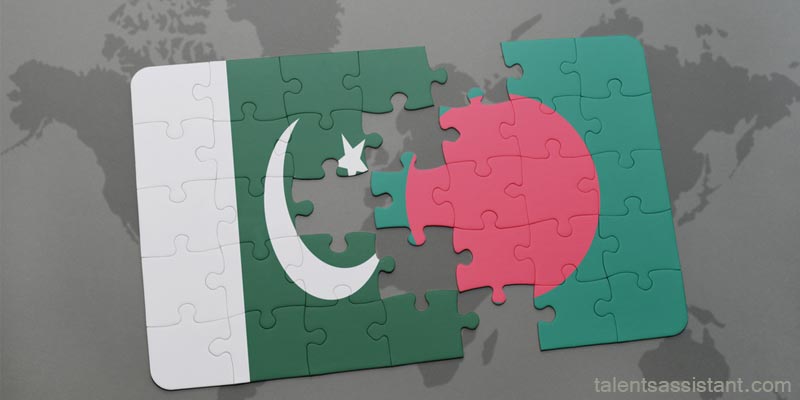
By 1946 it was clear to the British that they were progressing to need to stop India – which a united India was progressing to be inconceivable to protect. Bengal’s Muslim Alliance Chief Serve, Hussein Shaheed Suhrawardy, concurred with neighborhood Hindu pioneer Sarat Chandra Bose to claim a free united Bengal.
Instep when the parcel came in 1947 it was on the premise of religion, not dialect. The eastern portion of Bengal hence got to be East Pakistan whereas the west remained a portion of India – even though the Chittagong Slope Tracts (as it were three-per-cent Muslim) went to East Pakistan.
The links between the two wings of Pakistan were shaky, in any case, and the East was undermined from the primary by Pakistan pioneer, Mohammed Ali Jinnah’s eager advancement of Urdu as the national dialect. Bangla discontent rotted, especially after the military took over in Pakistan in 1958. Resistance coalesced around Mujibur Rahman (known as Sheik Mujib), who was imprisoned more than once by the military whereas campaigning for independence.
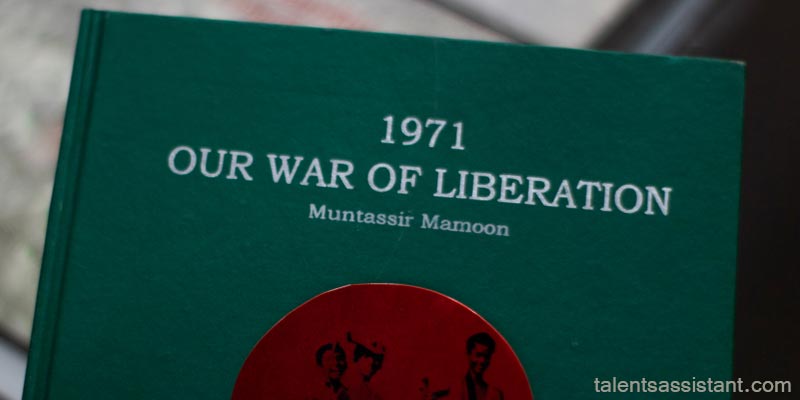
In 1971 Mujib’s Awami Alliance won 167 of 169 seats in East Pakistan. In emergency talks pointed at anticipating freedom, West Pakistan’s armed force propelled a genocidal assault, murdering thousands and capturing Mujib. Around 10 million refugees fled to India, where Awami Association pioneers announced freedom on 26 Walk. Obstinate guerrilla resistance started until at last, in December 1971, the Indian armed force attacked and shot out Pakistani strengths. The war had fetched three million lives. Mujib got to be the pioneer of a free Bangladesh.
By 1974, even though the Mujib Government was in inconvenience. An annihilating famine murdered 50,000, provoking a gigantic deluge of remote help to a nation seen by the West as a ‘basket-case’. With the nation turning out of control, Mujib expected authoritarian powers and prohibited all restrictions.
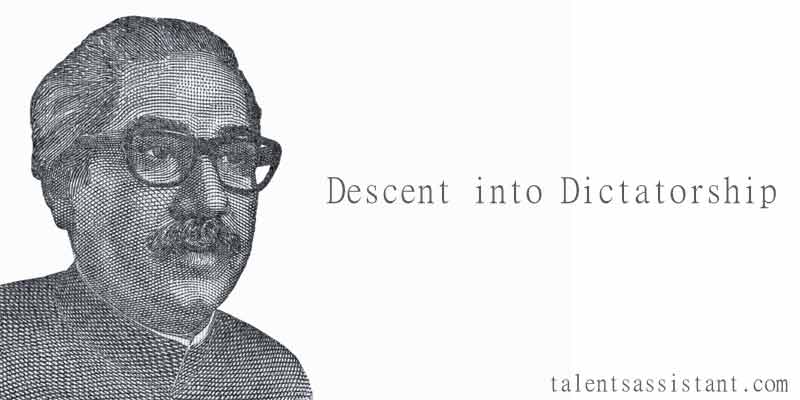
He was killed inside months by right-wing armed force officers, allegedly with clandestine US backing. An arrangement of advanced military upsets resulted, which eventually saw Common Hossain Mohammad Ershad rise on best. He was to stay there through the 1980s, cordiality of fake decisions.
| Name | Founded | Ideology | Leader |
| Bangladesh Awami League | 1949 | Capitalism, Social Democracy.Secularism | Sheikh Hasina |
| Bangladesh Nationalist Party | 1978 | National Conservatism, Economic liberalism, Bangladeshi nationalism | Khaleda Zia |
| Jatiya Party (Ershad) | 1986 | Nationalism, Islamic Democracy, Economic Liberalism | GM Quader |
| Workers Party of Bangladesh | 1980 | Communism, Marxism, Leninism | Rashed Khan Menon |
| Jatiya Samajtantrik Dal | 1972 | Socialism | Hasanul Haque Inu |
| Bikalpa Dhara Bangladesh | 2004 | Secularism, Social liberalism | A.Q.M Badruddoza Chowdhury |
| Gano Forum | 1992 | Secularism | Kamal Hossain |
| Jatiya Party (Manju) | 2014 | Anwar Hossain Manju | |
| Bangladesh Tarikat Federation | 2005 | Islamism | Syed Nazibul Bashar Maizvandary |
The Bangladesh Awami Alliance, frequently basically called (the Awami Alliance or AL) could be a major political party in Bangladesh. Major Political Party in Pakistan ‘All Pakistan Awami Muslim League’ was established in Dhaka, the capital of the Pakistani area of East Bengal, in 1949 by Bengali patriots Abdul Hamid Khan Bhashani, Shawkat Ali, Yar Mohammad Khan, Shamsul Huq, and joined afterward Huseyn Shaheed Suhrawardy who went on to ended up Prime Serve of Pakistan.
The Pakistan Awami Muslim Association was built up as the Bengali elective to the mastery of the Muslim Association in Pakistan and over the centralization of the government. The party rapidly picked up an enormous well-known bolster in East Bengal, afterward named East Pakistan, and eventually led the powers of Bengali patriotism within the battle against West Pakistan’s military and political establishment.
The party beneath the administration of Sheik Mujibur Rahman, the founding father of Bangladesh, led the battle for freedom, first through enormous populist and gracious noncompliance movements, such as the Six Point Movement and 1971 Non-Cooperation Development, and after that amid the Bangladesh Freedom War. After the emergence of autonomous Bangladesh, the Awami League won the primary common races in 1973 but was toppled in 1975 after the death of Sheik Mujibur Rahman.
The party was constrained by ensuing military administrations onto the political sidelines and numerous of its senior pioneers and activists were executed or imprisoned. After the rebuilding of democracy in 1990, the Awami League developed as one of the foremost players of Bangladeshi legislative issues. Since 2009, when the Awami Alliance came to control, Bangladesh has experienced law based backsliding. Amongst the pioneers of the Awami Alliance, five have ended up the President of Bangladesh, four have gotten to be the Prime Serve of Bangladesh.
The other Major party of Bangladesh is the “Bangladesh Nationalist Party”. It was established on 1 September 1978 by previous Bangladesh President Ziaur Rahman after the Presidential decision of 1978, with a see to uniting the individuals with the patriot belief system of the nation.
BNP won the moment, 5th, 6th, and 8th national election and two Presidential decisions in 1978 and 1981.
In the seventh national race of June 1996, the party holds the record of being the biggest resistance within the history of parliamentary decisions of the country, with 116 seats within. It has as of now 9 MPs in parliament after the 2018 national election.
The Jatiya Party may be a traditionalist political party in Bangladesh. The current acting chairperson of the party is GM Quader. On 3 January 2019, the party declared its choice to connect the Bangladesh Awami League-led Fantastic Collusion after having been in resistance to the last parliamentary term. Be that as it may, the party backtracked the following day and reported that it was aiming to stay a portion of the restriction. As of now, it holds Rangpur out of Bangladesh’s 12 city organizations
The Jatiya Samajtantrik Dal (JASAD) is one of the revolutionary party which was part of Bangladesh Chhatra League, the student wing of the Bangladesh Awami League, beneath the administration of Serajul Alam Khan, M. A. Jalil, ASM Abdur Rab, and Shajahan Siraj which was formed in 1972. It had an equipped wing, Gonobahini, driven by Colonel Abu Taher and Hasanul Haq Inu, Kazi Aref Ahmed, Monirul Islam, Sharif Nurul Ambia that driven a rough left-wing guerilla against the government of Sheik Mujibur Rahman.
Their point was to make a modern cleared out wing majority rule national government, for encouraging setting up a communist state along with the Bangladesh characteristics. This was driven by the government to create the Jatiya Rakhi Bahini, the point of which was to counter guerilla by the Jatiya Samajtantrik Dal (JASAD) activists.
Bikalpa Dhara Bangladesh is a political party established in 2004 by the previous President of Bangladesh and BNP parliamentarian Dr. A. Q. M. Badruddoza Chowdhury. Abdul Mannan (BDB Secretary-General) and later (BDB Ladies Vice-President) Rabaya Begum; two of the most profound resources of BDB play the foremost crucial part by selecting and overseeing the party advance itself towards its goals.
Their party image amid the surveys is the kula. Its current political arrangement is vague and has two seats within the parliament.
Gano Forum, actually People’s Forum, could be a political party in Bangladesh. GF was shaped through a part of the Awami League and the merger of gracious society branches in 1992. The party is headed by one of its authors, the protected legal counselor and universal legal adviser Dr. Kamal Hossain.
The previous Bangladeshi back served Abul Maal Abdul Muhith once served as a common secretary of the party. After the passing of Saifuddin Ahmed Manikin 2008, Mostafa Mohsin Montu. Dr. Reza Kibria has since served as the Common Secretary Veteran lawmakers such as Advocate Zahirul Islam (previous part of Parliament) and Mr. Mafizul Islam Khan Kamal (previous part of Parliament) are a portion of the Gano Forum. Mr. Mafizul Islam Khan Kamal is the official president of the party.
Asmaa Amin, Abu Sayeed, A. H. M. Khalequzzaman, Subrata Chowdhury, Mostafa Mohsin Montu, Sultan Md. Monsur Ahmed, Reza Kibria are the candidates of Fano Forum from Jatiya Oikya Front within the up and coming 2018 Boycott.
Bangladesh Tarikat League was established in 2005 by Syed Nazibul Bashar Maizvandary. He stopped the Bangladesh Nationalist Party over its union with Bangladesh Jamaat-e-Islami, whom he had blamed for supporting fear mongers. Bangladesh Tarikat Federation challenged the Bangladesh Common Race, 2014, and won two parliamentary seats.
Tariqat League Secretary-General MA Awal endeavored to create a fusion of Islamic parties in 2017. The arranged amalgamation would incorporate Bangladesh Khilafat Andolon, Faraizi Andolon, Imam-Ulama Parishad, and Islami Oikya Jote. The development was restricted by Syed Nazibul Bashar Maizbhandari, chairperson of the party. It was 17th April 2018 when Syed Nazibul Bashar Maizbhandari moved out M.A. Awal who was the Secretary-General.
He assigned Syed Rezaul Huq, a Presidium part of the party, to supplant M.A. Awal. The party looked for 30 seats to challenge the 2018 common race beneath the Grand Alliance.
Syed Nazibul Bashar Maizvandary is a Member of Parliament from Chittagong-2.
He was chosen in 2014 as a candidate for Bangladesh Tarikat Federation. M.A. Awal was chosen to Parliament from Lakshmipur-1 in 2014 as a candidate for the Bangladesh Tarikat League.
Bangladesh is a very important land in the world. Power states like the USA, China, Japan always try to involve in the development project of Bangladesh. They also try to interfere in Bangladesh Politics. For the last two decades, Major two parties of Bangladesh like Bangladesh Awami League and Bangladesh Nationalist Party Leading Bangladesh one by one.
Reference
© Copyright 2020, Talents Assistant | Design & Developed by AtZ Technology